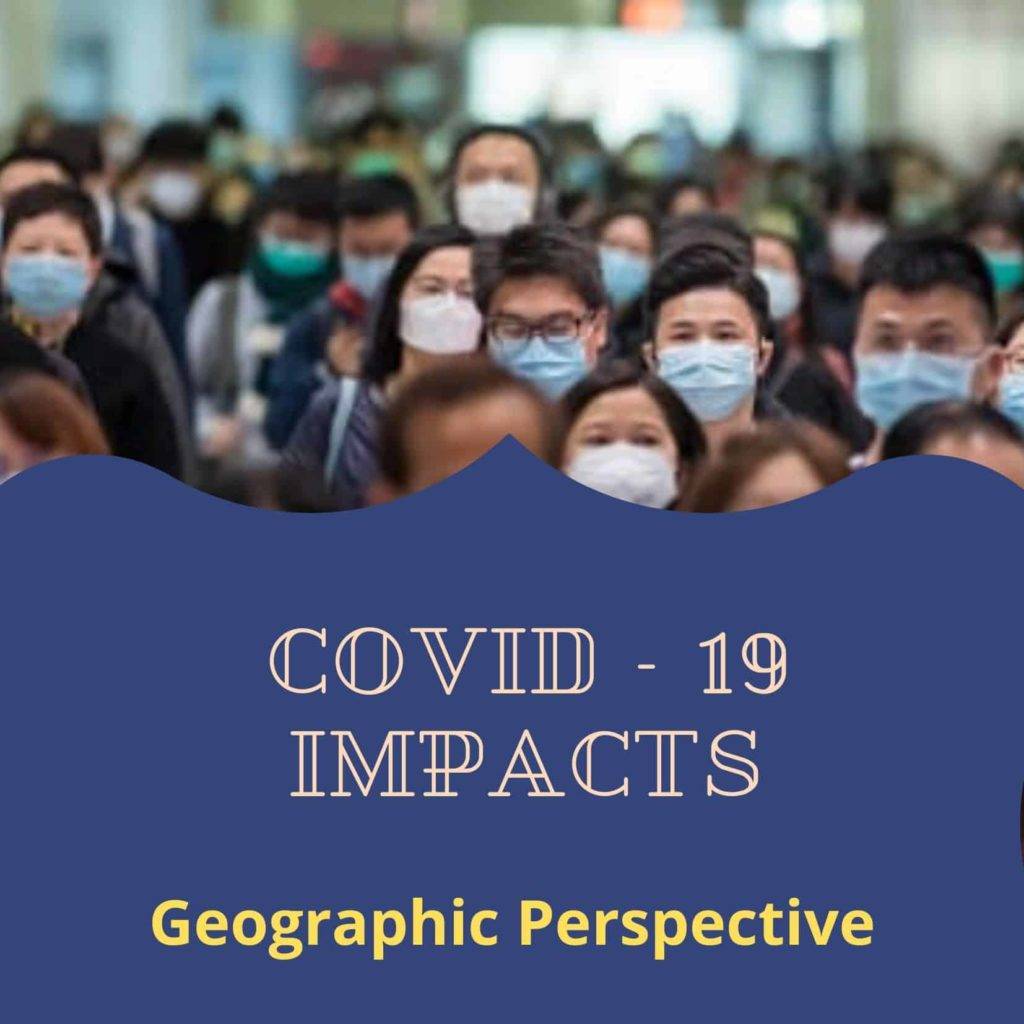
COVID-19 Impacts in Geographic perspectives
Geography as we know deals with almost every aspects around us. It is therefore inevitable that the current pandemic of COVID-19 will have a long lasting geographic impact.
These impacts can easily overlap with each other in a complicated cause and effect relation, however defined categories can be created viz.
We will discuss the Environmental and Demographic impacts of COVID-19.
Environmental Impacts
Possibly the only major positive outcome of Covid-19 is felt on environment. There is a new lesson learnt by humans
“Nature can nurture itself as it has strong resilience”.
makes excellent examples .The pollution levels touching lowest levels in decades. This has been due to near complete halting of industrial and transportation activities.
As Humans remains in lockdown ,wild animal are finding ‘new’ safer adobe to venture. Glimpse of dolphins in Mahim Creek, River Ganges or Olive Ridley turtles laying eggs in Gahirmatha beach during day time is such pleasing examples.
It is however that though entire natural system seems to be healing during COVID-19 pandemic ,the impact of waste remains a concern.
As analyzed by UNCTAD, volumes of unrecyclable waste have tremendously increased which includes
Demographic Impacts
All the demographic variables viz. Functional (fertility, mortality, migration) and Structural (population size, distribution and composition) are influenced by to COVID- 19.
212 Countries and Territories around the world have reported a total of 4,181,218 confirmed cases of the COVID-19 that originated from Wuhan, China, and a death toll of 283,877 deaths.(as on 11 May2020).
It is posing enormous health, demographic and social challenges to entire human population.
Thought the world is better equipped to fight pandemic today than it was in 1918 (influenza), it is mobility (migration due to more efficient transportation links) that makes population more vulnerable to the virus.
For many countries the initial cases development were essentially by travelers from China (as in Italy, South Korea, Japan)
Same is the case with –
Migration will be impacted by COVID-19 as well
However the mobility factors has different dimensions in India
The age factor of demography is also significant with less 65 year of aged people having highest risks from the virus. In most of the worst affected European countries mortality levels have been due to the age factor.